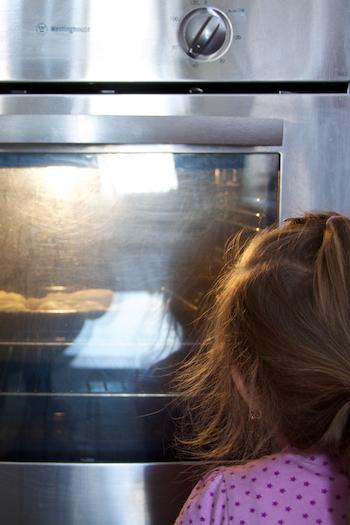Heating or cooking food for dinner
Duration/age

There are different ways you can heat food to get it ready to eat. Talk to your child about the different ways you can heat food and that it involves time and temperature.
You might warm food in the microwave, setting the timer for how long it will take. Will you heat the food on high or low? You might heat food in the oven so you will need to decide if you want it to heat quickly or slowly, as this will affect the temperature of the oven. You might heat food in a saucepan on top of the stove and you will need to decide if you want a quick or a slow boil. If you want the food to heat quickly you will need to set the temperature higher.
Materials you will need
- Microwave
- Oven
- Stovetop
Alternative tools
- Kettle
- Camp fire
- Toaster
- Sandwich press
Why does this matter?
This activity helps children to identify that we use number to quantify time and temperature. Time and temperature are forms of measurement.
What does this lead to?
This activity helps to children develop an understanding that there are different ways we measure and compare.
Language to use
- Hot, cold, too hot, too cold
- Higher, lower
- Temperature
- Time
- High, low, medium
- Sooner, later, ready, now
- Boiling
Questions to use
- How long? How soon?
- How should we heat this?
- How hot do you want this?
- Will it take more time?
- How long did it take last time?
Useful tips
- Remember to talk to your child in your home language.
More ideas
- Make popcorn using different tools to heat the corn. Is a frying pan or microwave faster?
- Use differently sized containers to heat food, making predictions as to which will be the fastest to heat.
Variation by age
Three to five year olds
- Make popcorn and record how long it takes till it starts to pop.
- Make iceblocks and put them in different parts of the yard to time how long each one will take to melt.
Questions to ask
- Which took the longest? Why did it take longer?
- Were they the same sized container?
- Is one deeper than the other? Is one shallower than the other?
- How do we measure that?
- Why is that happening?


